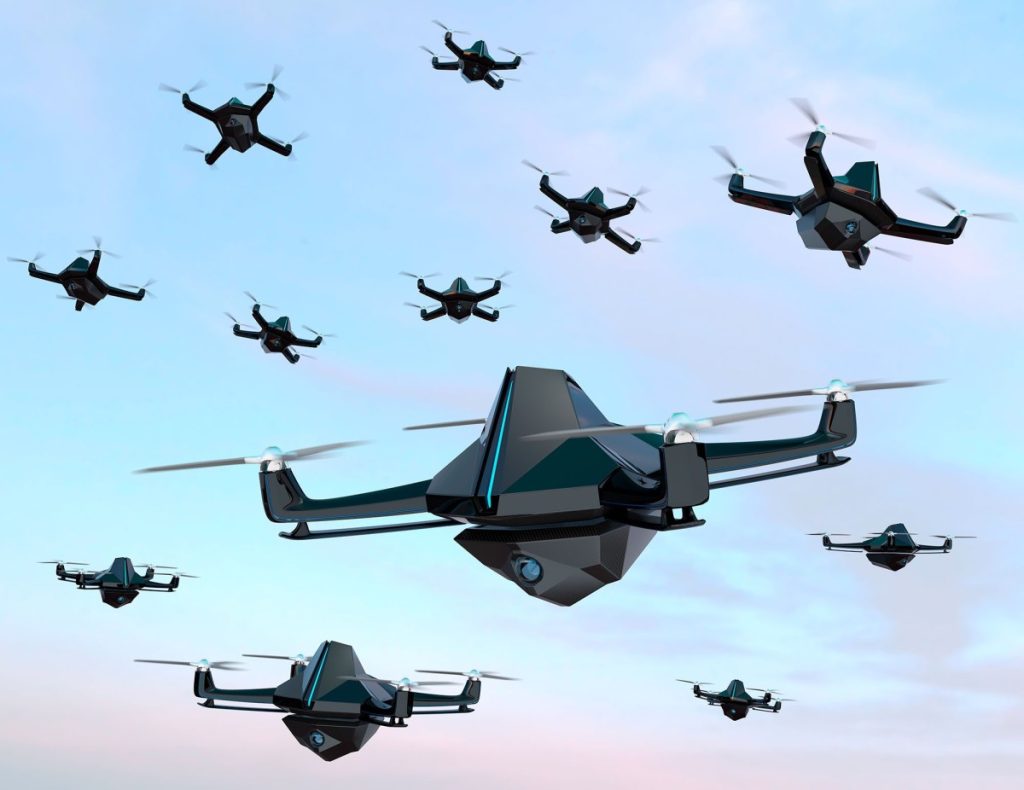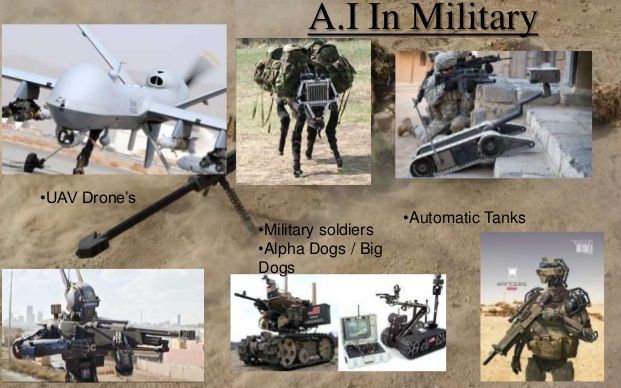A-I squared – Artificial Intelligence: Product and Tool of American Imperialism

Artificial Intelligence: Product and Tool of American Imperialism
by Michael Novick, Anti-Racist Action-LA/People Against Racist Terror (ARA-LA/PART)
Most of the fears expressed about A-I have focused on a couple of issues. There are fears of a fourth industrial revolution in which massive numbers of intellectual, professional, and creative workers are replaced by automatons, along with other skilled and unskilled “blue collar” workers like drivers, warehouse workers, clerks and others. On a more science fiction level, there are fears of a “singularity” in which robots dominate or even attempt to exterminate their human creators.
But in the real world, right now, these fears discount or disregard the actual reality, which is that A-I stands for not only “Artificial Intelligence,” but also “American Imperialism.”
Civilian applications of A-I like Chat-GPT and its emulators, rely on digital sweatshops of tens of thousands of low paid workers in the Philippines and other “3rd World” countries to convert texts and images of all sorts into “feedstock” to train the large language models and the graphical “generative A-I” programs.
The recent strikes by screen-writers and actors in the WGA and SAG-AFTRA focused attention on the use of AI– “Artificial Intelligence” using large language models by big corporations — to try to automate creative jobs and other work, through the use of computers that can simulate voices, generate designs, and produce meaningful (if not necessary factually accurate) literary and analytical texts. Fears of such automation generated widespread support for the striking Hollywood workers. But there’s another aspect to the whole process that has gone un-noticed.
Occasionally, however, the truth leaks out even in corporate media. In the Washington Post, Rebecca Tan and Regine Cabato recently reported the dirty little secret behind AI — it depends on exploiting tens or hundreds of thousands of underpaid foreign workers.
Whose language do large language models speak?
“In a coastal city in the southern Philippines, thousands of young workers log online every day to support the booming business of artificial intelligence,” they report.
“In dingy internet cafes, jam-packed office spaces or at home, they annotate the masses of data that [US] companies need to train their artificial intelligence models. … More than 2 million people in the Philippines perform this type of ‘crowdwork,’ … as part of AI’s vast underbelly. While AI is often thought of as human-free machine learning, the technology actually relies on the labor-intensive efforts of a workforce spread across much of the Global South and often subject to exploitation. … Low-quality data yields low-quality AI. So click by click, a largely unregulated army of humans is transforming the raw data into AI feedstock.”
In the Philippines, they report, at least 10,000 of these workers do this labor on a platform called Remotasks, which is owned by the $7 billion San Francisco start-up Scale AI.
Remotasks describes itself this way on its website: “Remotasks is an online tasking platform focusing on building technologies related to AI (artificial intelligence), neural networks, and machine learning. We work with different companies to help them form tomorrow’s smarter gadgets – from self-driving cars to more intelligent AI systems. With our Remotaskers, we help deliver various output[s] to clients that can help them develop their AI projects – this time with our invaluable human input.
“However, unlike other online tasking platforms, Remotasks won’t force you to do the same tasks over and over again. Thanks to our continuous stream of orders, our Remotaskers can engage in a wide variety of Tasks – from simple orders to more challenging projects.”
Remotasks may admit that human input is “invaluable”, but they are essential arbitrageurs generating colossal profits out of the artificially low cost of human labor in the Third World applied “remotely” into the high-value-added products of Silicon Valley (whose value lies in part in their capacity to eliminate the need for higher-paid labor in the US itself).
Hiding in plain sight in AI, as it does in the extraction of cobalt in the Congo or lithium on Native lands in the US for the new “green” energy economy, is the reality of imperialism, neo-colonialism, land theft and genocide.
The empire is a fractal or holographic system — at every level of magnification and within every cell or fragment of the system, the reality of the empire is omnipresent and inescapable. Whether you are organizing for worker rights or traffic safety or the environment in the US, the fact of the matter is, you are confronted by an empire that is your intractable enemy. The only way to win in the long run is to recognize this reality, this enemy, and strategize accordingly, in solidarity with those millions in Asia, Africa, and Indigenous America, north or south.
What’s driving driverless vehicles?
We must not ignore the Even more consequential role of the US military in developing and deploying artificial intelligence and its associated technologies, such as autonomous vehicles, facial recognition, motion detection and other techniques that are grouped as “cyber warfare.” For example, attention has been focused on traffic jams created by robotaxis in SF, but the larger reality is that self-driving car research in the US is being driven principally by the US Army Tank Division to build autonomous battle vehicles. That’s why all the Big Tech companies like Google and Amazon are now major military contractors on cost-plus “Defense” Department contracts. These developments reflect a military that cannot trust humans to carry out its dirty work for fear they may turn the guns around, even with an all volunteer army or navy.
Very little if any of this development is being reported in the corporate media for public consumption, despite reports to Congress, discussion at various quasi-public events hosted by “think tanks”, and coverage in the trade press of the military-industrial-complex corporations. Much of what follows comes from reports published by Defense One and other such on-line publications that keep “defense” contractors apprised of what the Department of “Defense” is experimenting with or paying for.

The U.S. Navy, for example, recently completed its first deployment of four unmanned warships. The vessels spent five months in the Pacific testing various ideas about how to integrate their capabilities into “crewed” fleet operations. They had engaged in joint combat training operations with ships run by and containing Navy sailors.
The four autonomous surface vessels left Southern California on Aug. 7, 2023 and returned here almost six months later on Jan. 15, 2024. Two, Sea Hunter and Sea Hawk, were produced by DARPA, the Defense Advanced Research Projects Agency (the same agency that developed the backbone of what became the Internet); the other two, Mariner and Ranger, were from the Navy’s Strategic Capabilities Office’s “Overlord” program.
The Navy brought swarms of air drones to interface with the unstaffed vessels to the annual Unitas exercise, where they collected and shared reconnaissance data that helped the multi-national fleet of warships of the US and those of several of its NATO and other military allies detect, identify, and take out “enemy” craft more quickly in the exercises.

Rear Adm. James Aiken, commander of the US Navy’s 4th Fleet, declared at a recent US Navy Surface Warfare symposium in Virginia, that, “We had an unmanned surface vessel and unmanned air vessel informing each other and then we actually had an international partner’s missiles on board, and were able to shoot [at] six high speed patrol boats coming at us. And we were six for six.”
The US Army tank division continues to be leading the development of autonomous vehicles. All branches of the US military are using armed autonomous aerial vehicles (AKA drones), as evidenced by the Navy report.
The Defense Department recently published a guidance document on the use of autonomous weapons and when and under what circumstances they can be authorized to kill, buried in bureaucratese and swamped in acronyms for various military and civilian authorities. This is part of a larger strategy for warfare in “cyber-space”, including surveillance, intelligence gathering, hacking, and disruption of both military and civilian ‘command-and-control’ systems.
“Defense” is Another Name for Offense
In a separate recent declassified report to Congress, the DoD declared:
“Since 2018, the Department has conducted a number of significant cyberspace operations through its policy of defending forward, [TTT note: “Defending forward” is more commonly known as aggression] actively disrupting malicious cyber activity before it can affect the U.S. Homeland. This strategy is further informed by Russia’s 2022 invasion of Ukraine, which has demonstrated how cyber capabilities may be used in large-scale conventional conflict.
“These experiences have shaped the Department’s approach to the cyber domain:
• The Department will maximize its cyber capabilities in support of integrated deterrence, employing cyberspace operations in concert with other instruments of national power.
• The Department will campaign in and through cyberspace below the level of armed conflict to reinforce deterrence and frustrate adversaries.
• Finally, the Department recognizes that the United States’ global network of Allies and partners represents a foundational advantage in the cyber domain that must be protected and reinforced.”
The report concludes that “The Department confronts an increasingly contested cyberspace,” facing what is sees as sophisticated and capable enemies in China and Russia, as well as threats from Iran and other states, non-state actors, and international criminal elements whose cyber-crimes have a potentially disruptive impact on US economic interests. It authorizes a much more aggressive approach to these “adversaries.”
Margaret Palmieri, the deputy chief of the Pentagon’s lead data and AI office, said that recent experiments have brought the Defense Department closer to achieving smoother, more interconnected communications among all its operations and exercises with allies. “Absolutely we have a new connection, a new set of connections across multiple data fabrics and applications,” she said during a Hudson Institute event in Washington, D.C.
The Pentagon has been conducting a series of “global information dominance experiments,” acronym GIDE, to help the DOD improve sharing information across the military forces network and as part of the larger goal of creating more seamless military communications—an effort it calls “combined joint all-domain command and control,” or JADC2.
Palmieri said senior defense officials still need to be briefed on the GIDE 8 results, but the plan for the next GIDE experiment is to sync efforts with the Army’s Project Convergence event in March. “We really want to see how the combat commands and the joint task forces now take that down to a tactical level,” Palmieri said. GIDE will then head to the U.S. Indo-Pacific Command’s Valiant Shield exercise and the Joint Staff’s global integration exercises.
Global Information Dominance at Bargain Prices
The US military is using off-the-shelf commercial A-I for some of these functions, as well as developing its own A-I mechanisms. The DoD is developing its own chatbot. But they rely heavily on existing civilian A-I products. Chat-GPT recently changed its “terms of service” to drop the prohibition on its use by the military. And of course almost all the other commercial users and developers of A-I, like Google, Amazon and Microsoft, are actually defense contractors in their own right, developing software applications and weapons control and surveillance systems for the US military.
Jude Sunderbruch, director of the DoD’s Cyber Crime Center (DC3) recently spoke at DefenseScoop’s Google Defense Forum alongside Col. Richard Leach, the Defense Information Systems Agency’s intelligence director. “I think we’re really just at the start,” Sunderbruch said, later adding that the U.S. and its allies will have to get creative and learn how to best use existing AI systems to gain a leg up on competing intelligence giants like China.
AI and so-called machine learning technologies are seen as the next phase of cyber-security, as they enable new ways to carry out social engineering attacks and enhance hacking tools. AI systems can also be used for threat and vulnerability analysis, as well as system testing, said Sunderbruch. The US has already used ChatGPT to create software in the coding language Python that analyzed communication between MAC addresses— unique identifiers used by networked devices. Based on their movement and communication patterns, the military’s A-I “Geronimo” project could deduce what types of units they were tracking.
Inexpensive technology can be “very, very effective,” US Army Chief of Staff Gen. Randy George said in an interview at the Joint Readiness Training Center. at Fort Johnson in Louisiana. George cited a $75 decoy device built by Geronimo that mimics the electromagnetic signature of a command post. But that’s just the tip of the Geronimo’s home-built arsenal, which includes everything from computer code written by ChatGPT to a thermal-scoped, bomb-dropping version of the Army’s TS-M800 quadcopter.

Geronimo modifies quadcopters (drones) for various military purposes. One TS-M800 carries scanners that can find cell phone and WiFi signals. By flying drones over a forest, Geronimo members told George, they could identify Army positions by picking up WiFI signals below.
The Defense Information Systems Agency’s intelligence director speaking with Sunderbruch underlined the importance of the use of cheap, commercial A-I for military intelligence purposes. “Such tools may be less secure than U.S. Army software,” but commercial software can sometimes be the better option if it defeats an enemy before they can exploit a vulnerability. “I don’t care if you can hack into my stuff if you’re dead,” he said.
He highlighted Geronimo’s use of cheap hardware like the Raspberry Pi hobbyist computer and spectrum-analysis devices like HackRF and RTL-SDR. Such devices are widely used in Ukraine to identify enemy drones. Geronimo’s use of commercially available, open-source compatible technology also tamps down logistics burdens, he said.
Not admitted in these remarks is that budgetary concerns are also a factor. The US economy is not really capable of sustaining all the costs of the vast military apparatus of it’s globe-spanning empire, militarizing the border, arming its clients and cat’s-paws like Israel, Ukraine, Egypt and others, and carrying out its own costly military assaults and exercises. Using cheap off-the-shelf hardware is desirable as compared to signing off on cost-plus contracts with cyberwar and A-I tech companies. The USAF (that stands for Air Force) and the new Space Force create by Trump to militarize near-Earth orbits, are more frank about the need to economize, especially in the context of the on-going war planning vis a vis China. As Defense One recently reported on a think tank analysis of USAF “war games” against China, using drones to complement and supplement dwindling piloted aircraft: “The U.S. Air Force still needs to figure out the “right tradeoffs” to balance cost and capability for its future family of drones, …after testing how a mix of unmanned and manned aircraft would fare in a fight with China.
Robot Wingmen versus China
In a story entitled “Robot Wingmen Versus China,” they report that, “During a July 2023 wargame run by the Mitchell Institute for Aerospace Studies, three “blue” air teams used a mix of collaborative combat aircraft, or CCAs, as sensors, decoys, jammers, and weapon launchers to “disrupt and stimulate” China’s integrated air defense system, “locate its critical nodes, and begin to attrit threats to support crewed aircraft operations,” according to the institute’s new report on CCAs. The Mitchell Institute is sponsored by defense companies and is an affiliate of the Air & Space Forces Association.
“The report echoes the Air Force’s own argument for CCAs: the service needs them as its fighter force shrinks. But realizing this vision hinges on the service’s ability to buy it. Since the Next Generation Air Dominance, or NGAD, manned fighter aircraft, won’t be ready until the 2030s and will likely have a hefty price tag, the service is relying on CCAs to provide “affordable mass.” The Air Force has been reluctant to release the exact cost range for the drones, but Air Force Secretary Frank Kendall has said he wants a single CCA to cost no more than a third of an F-35—meaning a CCA would cost about $27 million.”
“The Mitchell wargame featured ten types of CCAs, ranging from expendable, $2 million drones to highly capable, $40 million “non-attritable” ones. The biggest takeaway was the importance of affordability, since the teams gravitated towards lower-cost CCAs across the board, Robert Winkler, vice president of corporate development and national security programs at Kratos Defense, said Tuesday during the report’s release. Winkler said his team tended to use CCAs in the $10 million range.” See the full report at https://www.defenseone.com/technology/2024/02/robot-wingmen-vs-china-what-think-tanks-wargame-revealed-about-key-usaf-concept/393980/ The Air Force recently confirmed that five companies—Boeing, General Atomics, Lockheed Martin, Northrop Grumman, and Anduril—are under contract to design and build a fleet of at least a thousand CCAs [robot drones on the scale of fighter jets].
Even the Pentagon is coming up against the realities of the cost of the “two-and-a-half wars” that US military strategy is still based on. But few if any corporate politicians or journalists are acknowledging these costs in public or the concomitant sacrifice of civilian infrastructure, housing, health care and education, let alone opposing or condemning them.
One positive outcome of the exposure of US-Israeli complicity in genocidal attacks on Palestinian civilians is that it is also shining a light on Israeli companies like Elbit whose technology is also being used in US border control operations. Workers at US tech companies like Google and Amazon have begun speaking out against and blowing the whistle on the use of their tech by the US military and “intelligence” (espionage and counter-insurgency) operations. Such understandings need to inform a deep and anti-imperialist understanding of and effective opposition to “AI2” – A-I squared – American Imperialism’s Artificial Intelligence cyber warfare on the people.
